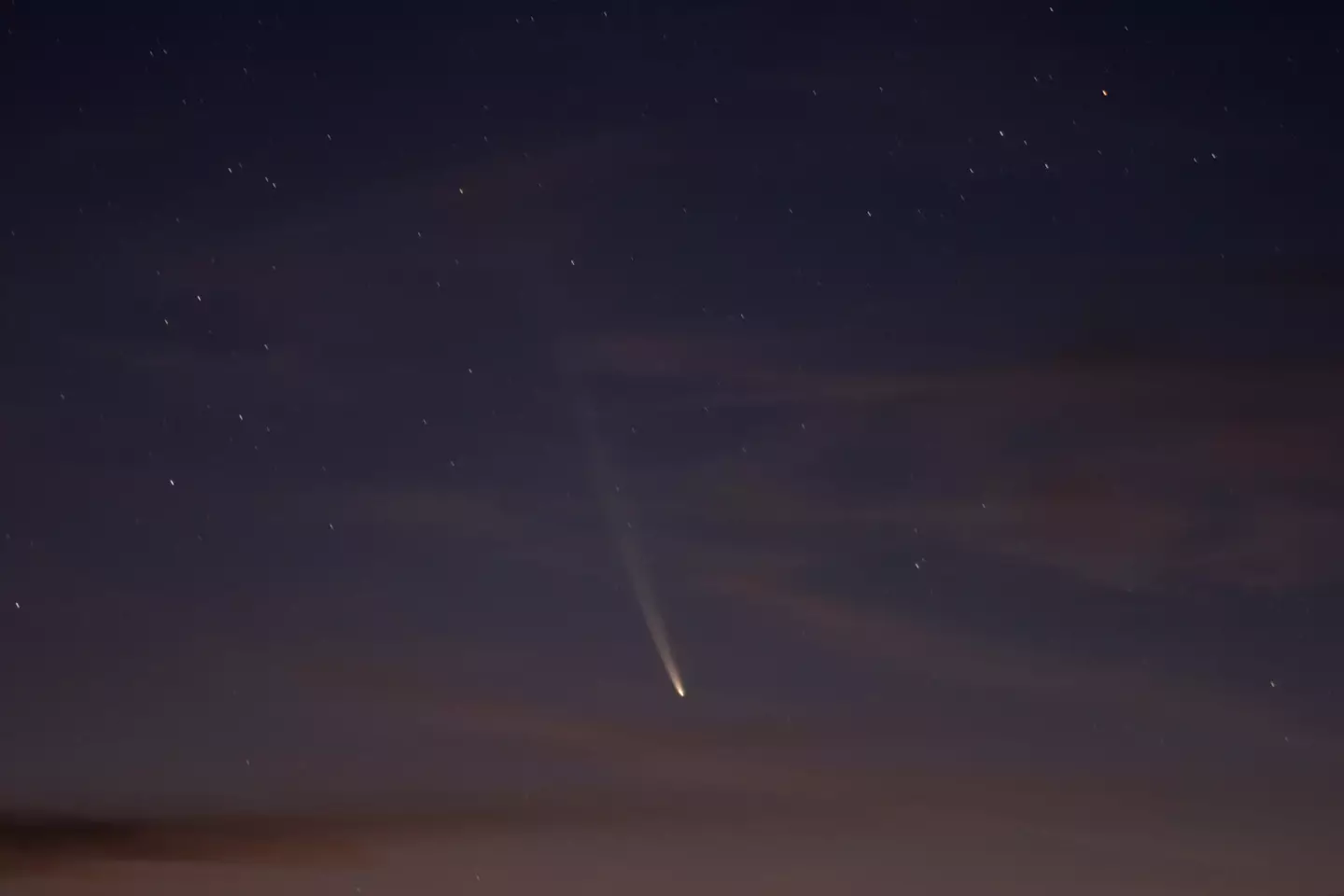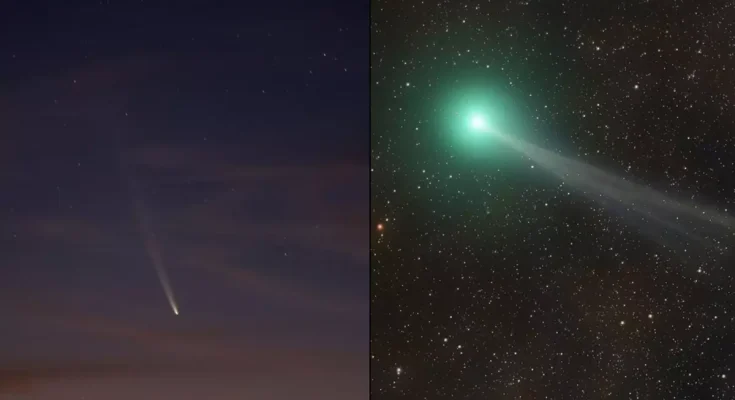You’ll be able to see it this month, but today will be your best chance
Tonight the skies will blaze with a seldom seen comet that has not been visible to the human eye for 80,000 years.
Back in those days, the Neanderthals were still kicking around and nobody had ever tasted the majesty of a meat feast pizza.
Scientists from the Royal Astronomical Society (RAS) have said that we’re now in a place where we could get to see this comet again and that it might be visible to the naked eye, though you may want to play it safe and use binoculars.
The comet is known as Tsuchinshan-ATLAS, or A3, and it could be bright enough for us to see it.
The RAS experts said that it could be visible between 12 and 30 October, but that today (12 October) is your best chance to see it.

If you want a good chance of seeing A3 then you ought to look westwards just after sunset, which depending on exactly where you are in the UK is going to be around quarter-past-six.
However, RAS expert Dr Robert Massey said it was ‘not very likely’ that you’d be able to see it clearly with the naked eye.
He said: “We’re all really excited about the prospect of the Comet A3 and how it might just be a nice bright object in the night sky.
“I would think that you’re going to need a pair of binoculars to pick it out, or a telescope if you have the right kind of telescope with a wide field and you know exactly where to look.
“But who knows, it might be visible to the naked eye as well. We’ll just have to wait and see.”
A3 was only discovered in January 2023, which is understandable as it’s been just about 80,000 years since we’d last have been able to see it.

Two observatories independently spotted it, hence the Tsuchinshan-ATLAS name, and it seems to visit our inner solar system very rarely.
Dr Massey said you shouldn’t expect to see a ‘comet of the century’ but he does have some advice for those hoping to capture a picture of the comet.
“It helps if you’ve got a good DSLR camera and can take a series of exposures – a lot of astrophotographers do so successfully,” The expert explained.
“Also, if you have a good mobile phone camera and a small telescope, you can hold the mobile phone against the eyepiece of the telescope and try to take a picture that way.
“That worked well with comets like NEOWISE and it might work well with this one, depending on how bright it is.
“And if it’s genuinely easy to spot, you might, might be able to pick up your mobile phone, rest on something, and just point and shoot.”



